In an ever increasingly fragmented media landscape, spurred by the advent of mobile digital media, consumers are spending more time in the moment, living. Worldwide urbanisation has been accompanied by a shift in consumption habits.
With this shift in media consumption it seemed only natural that OOH, a medium that does not suffer from the erosion of reach and audience that affects editorial media, or the brand safety issues that have marred digital media in recent years.
More importantly, OOH is a media channel where technology is embraced as a true friend. Digital innovation drives OOH performance and attractiveness in many ways, from the ability to use data to fuel cross-media integration, through to better audience measurement.
To get the most out of DOOH advertising, you'll need to think creatively.
This blog should have you covered!
Why Creativity is King In Advertising
Design Considerations For Digital Out of Home
Digital Out Of Home File Formats
5 Great Examples of Digital Out Of Home Examples
Why Creativity Is King in Advertising
Like most things, a bit of context does wonders.
Before we can really appreciate great digital out of home creative we need to understand why creativity is so important in advertising.
While the equation today involves several factors, good creative is still the most important element. Because of new breakthroughs in data and technology, the elements of targeting, reach and recency can significantly affect sales outcome of a campaign. In fact, the effect of media on sales has increased to 36% from 15% over the past 11 years.
Looking at the quality of creative, weak creative results in weak sales lift, and the sales lift is attributed primarily to media. This is true for both traditional TV and digital campaigns. The reverse is true when the creative is strong—sales lift is higher and is affected less by media.
Feeling Our Way To Reason
Although most people jump straight to clumsy puppies or crying babies when thinking about emotional response, it's probably more accurate to say that we have an emotional response to any and all stimulus.
According to Dan Hill in Emotionomics: Leveraging Emotions for Business Success, It takes less than three seconds to have a gut reaction:
“Emotions process sensory input in only one-fifth the time our conscious, cognitive brain takes to assimilate that same input.”
Emotional response and triggers are the building blocks of the world around us.
From the visual and auditory cues early man would get from predators and dangers to the cry of a baby we're hardwired to respond to certain stimuli with emotions which trigger action. Fight, flight, nurture or delight.
It was only natural that we, as intelligent beings, would recognise this as an opportunity for us to persuade, manipulate and influence.
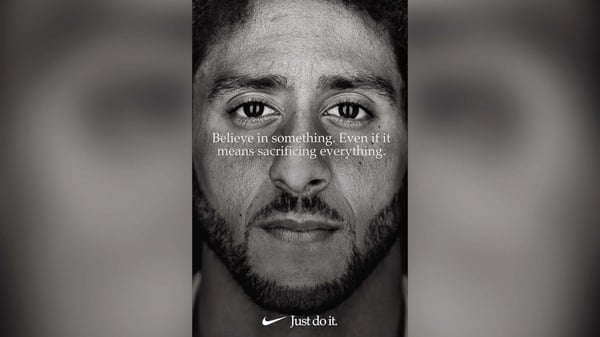
But it's not without its critics.
Many people believe emotions take a negative role – keeping us at arm’s length away from rational decision making.
Instead, it would appear that the opposite is the case.
As Douglas Van Praet, author of Unconscious Branding: How Neuroscience Can Empower (and Inspire) Marketing, wrote in Fast Company:
“The most startling truth is we don’t even think our way to logical solutions. We feel our way to reason. Emotions are the substrate, the base layer of neural circuitry underpinning even rational deliberation. Emotions don’t hinder decisions. They constitute the foundation on which they’re made!”
And according to a study conducted at the University of California at Santa Barbara which indicates a modicum of anger increases ability to distinguish between relevant and irrelevant claims in disputed issues is sharpened.
Once we understand how fundamental emotions are to our decision making, we can begin to appreciate how and why an approach grounded in the ethereal (emotions and feelings) can actually lead to an improvement in the tangible (revenue and associations).
Design Considerations for Digital Out Of Home
With that in mind it's the best to go back to basics. We've found particularly positive responses to design briefs that ensure the following 3 questions are answered in the creative:
What?
What is the point of your advert? Is it to showcase a new product? Improve the awareness of your brand?
Having a clear understanding of your objective is so important.
In journalism, reporters are taught to lead with the most important information. This is often called a 'lead' and a good lead can convey a lot of information in a very short amount of time.
‘A healthy 17 year old heart pumped the gift of life through 34 year old Bruce Murray Friday, following a four-hour transplant operation that doctors said went off without a hitch.’
This, an award winning lead from the Washington Post, is a great example of a lead.
After the lead, the information is presented in decreasing order of importance. This is called the inverted pyramid structure – the most important info at the top.
The inverted pyramid is great for readers. No matter the reader's attention span – whether he or she reads just the lead or the entire story – the pyramid maximises the amount of information they glean.
This is a great habit to get in to when considering advertising creative and we recommend it to all of our clients when they're struggling to find the focus with their advertising.
Why?
Why should your customers care? Is your product at it's lowest price ever? Have you just been voted the countries leading car supplier?
Where?
Where should they take this information? Are they supposed to go online and browse, redeem a voucher or attend an event? Give them a direction.
Advanced Design Considerations for Digital Out Of Home
Use Movement (Use Video)
By it's very nature, digital out of home gives advertisers access to motion and movement through multimedia formats.
Video! It's just more engaging.
Movement has even been found to increase memory encoding by two-and-a-half times on out of home inventory.
Target Audiences At Different Times of Day
The programmatic nature of DOOH means you can be dynamic with your content. Aligning your messaging with context in a easy, low-maintenance way has been coveted by advertisers for a time in memoria.
Amplify With Complementary Technology
Keep it Simple
Whitespace
Emptiness implies that it should be full of something, that it’s not doing its job, but this is not quite the case.

White space when used strategically can help boost your design’s clarity and overall look by balancing out the more complicated and busy parts of your composition with space that helps your design to breathe.
Focus
A key element to any good composition is a strong focal point, as it helps your viewers’ eyes naturally settle on the important pieces of your design first.
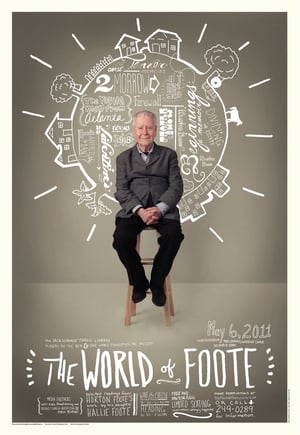
Keep in mind that the main goal of any design is communication. Whether you’re communicating an idea, some information, or simply a feeling or emotion, your design is telling a specific story.
Hierarchy
Scale and visual hierarchy are some of those creative fundamentals that can really make or break your designs.

Hierarchy is the arrangement and design of elements in order to visually signal importance. You might make a more important element bigger and bolder than a less important element which might be smaller and fainter.
Digital Out Of Home File Formats
In an ideal world you'll be working closely with a design partner who will be able to sort all of this our for you. If not, you'll need to know what kinds of file formats, resolutions and dimensions are needed for your chosen digital out of home inventory.
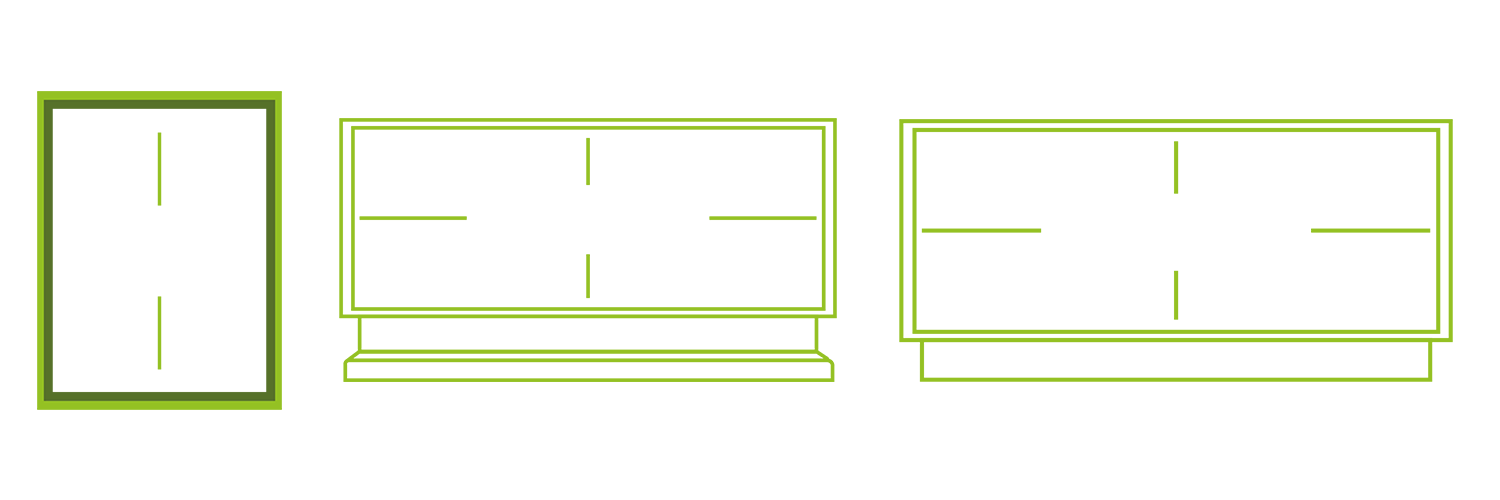
Unlike traditional out of home, digital out of home advertisers will have to consider multimedia file formats and it can get a little confusing. Below is a list of the most commonly accepted file formats for digital out of home advertising.
|
Basic Video Formats |
Basic Still Image Formats |
|
Basic video format for 16:9 Full-HD landscape screens (horizontal):
|
Basic still format for 16:9 Full-HD landscape screens (horizontal):
Frame rate: 25,00 fps progressive Frame rate, color depths and compression specs for all of the above formats:
Color depth: 24 bit (16,7 mio. colors) |
5 Great Examples of Digital Out Of Home
Here's a collection of digital out of home that's sure to inspire you.
1. The Ocean's Biggest Threat by Sky Ocean Rescue
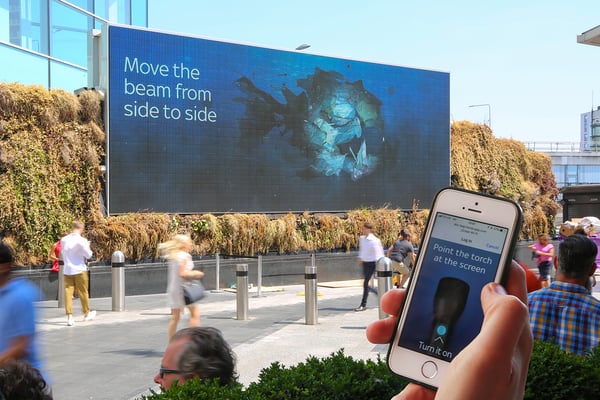
By 2050, the plastic polluting our oceans will outweigh the marine life. To highlight this environmental risk, WCRS has created 'The Ocean’s Biggest Threat', a digital out of home campaign for Sky Ocean Rescue, to mark Plastic Bag Free World Day.
The interactive campaign broke on 3 July at Westfield London with a domination of Ocean’s spectacular large format full motion digital out of home screen in Eat Street. The aim is to encourage passersby to discover what is the most menacing danger lurking in the oceans by filling the screen with the silhouette of a menacing, deep sea creature, accompanied by the headline “Discover the ocean’s biggest threat”.
Participants were invited to use their mobile phones to connect with the screen via its free wifi. A combination of 3D technology, video and streamed data will then turn their phones into virtual torches which can be used to detect what is really casting the shadow on the screen. At this point, the torches reveal that the biggest threat to our oceans isn’t sharks or sea-monsters, its single-use plastic. The initiative is supported by Westfield London which is planning a plastic bag amnesty, encouraging visitors to say no to single use plastic bags for the day by accepting reusable non-plastic Sky Ocean Rescue totes instead.
Further activity features on Ocean screens in Manchester and Glasgow and on several screens throughout Westfield London. The activity will be amplified by social media.
Our Thoughts:
Digital Out Of Home is all about interactivity and immersion.
The Kinetic/Joule study found that 38% of mobile app users have searched for a brand online or a branded application at a mobile app store after seeing Out of Home advertising. A quarter of consumers said they had been prompted by Out of Home media to search for a brand on a mobile browser, while 17% said they had searched an app store for a branded app after seeing a poster campaign.
The research highlights the growing potential for integration between online advertising and branded technology, and both Digital Out of Home sites and conventional posters. It shows that smartphone apps have become an established form of entertainment while consumers are out and about. Smartphone owners are most likely to use mobile apps or mobile internet browsers when on-the-go or travelling on public transport.
2. McDonalds Weather Responsive Creative
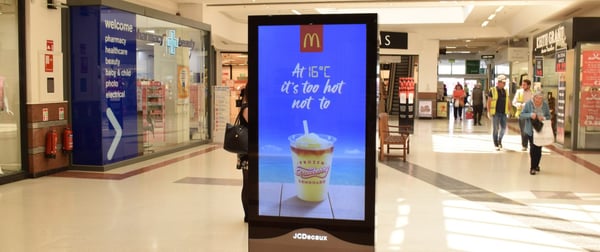
Digital out of home creative is at it's best when it integrates with the latest in OOH technology. McDonalds took this to the next level when they made every Brit's favourite topic of conversation a focal point for their digital out of home creative.
Tapping into Met Office data, McDonalds in association with JCDecaux, was able to display the current temperature and dynamically change the surrounding content as and when the temperature changed.
This gave context and depth to what would normally be a very standard OOH 1920x1080 poster. It was successful in connecting the dots we all have in our brain whenever the sun comes out.
How important is context?
|
But why is being contextual so important in Advertising?
And if you need to see results, look no further than research conducted by Differentology, brands like McDonalds, Heinz and Deliveroo saw a sales uplift of 51% when they focused on targeted their customers when they were engaged in relevant activities.
Malcolm Gladwell, The Tipping Point. Before discussing how best to use context and which advertising mediums offer it, let's go through the types of context.
Different times of the day carry different customer intents. While your customers are driving to work, they’re looking to fill empty space. While they’re at work, they’re focused. When they’re home, they’re looking to unwind. This means that you need to change your advertising message to suit the intents of your customers. If for example we go back to the driving to work scenario, seeing a roadside billboard with witty creative and entertaining characters is a welcome break from the traffic.
Platform Context
Just how different times of the day can carry different values, so to can the platform you actually choose to advertise on. This is something most advertisers consider without even realising.
When you think about digital out of home advertising, you'll often think of the potential. The data it can provide you, the reporting and the multimedia creative. You wouldn't dare just put a boring old static image on a massive digital billboard, would you? But with the amount of YouTube pre-roll ads being ripped straight from TV, it would appear that marketers haven’t learned the lesson. Likewise with digital out of home advertisers just recycling their OOH creative and places them on flashier screens. Or perhaps it’s more appropriate to say that marketers haven’t taken the next lesson. People are consuming media differently. Some platforms are incredibly dynamic, they can be viewed anywhere, at anytime. So you need to make sure that you’re either providing a message relevant to all the different touchpoints, or you’re picking the right mediums.
Situational Context
Here’s the be all and end all of situational context: make your customers feel like the ad they’re being served is built specifically for that very moment they’re experiencing it in. The most obvious way this is being done today is through social media. Just look at some of these tweets that leverage current events to really get the most out of situational context. Like Wall’s response to A-Level exam results day in 2018:
For more traditional media, like out of home, this takes a less specific perspective but is equally as effective. Radio leverages pain points that are part and parcel of the biggest touchpoints advertisers have access to. One of the best examples of this is morning drive time, where the roads are jam packed and roadside billboards get the lion's share of views. Here, in this moment, you have a captive audience. You know what they’re doing: driving sat behind another car with their handbrake on. You know how they’re feeling: bored. What can we do as creatives to take advantage of this situational context? |
3. New Balance, New York Fashion Week (Exception Spotted)
Thinking outside of the static box, digital out of home inventory has the potential to be truly surprising and interruptive.
When New Balance were given the option to take on New York Fashion week (one of the busiest and most influential weeks in the world of high fashion) they knew there were as many risks as there were rewards.
New Balance would struggle to find engagement with the high-fashionistas from standard OOH, but they knew that if they could find something that would showcase talent and personality then they'd be off to a winner.
Enter DOOH.
With 1920x1080 digital signage retrofitted with cameras and loaded with machine learning technology that read the outfits of those passing by and displayed those it deemed "exceptional".
The engagement was phenomenal and it's owed completely to the creative in this case. By championing those attending the event New Balance had, in effect, mobilised an army of influencers to spread the brand across their social channels and networks.
Without the digital tech there would've been no personalisation. This is event digital out of home at it's finest!
4. Churchill Uninsured Drivers Billboard
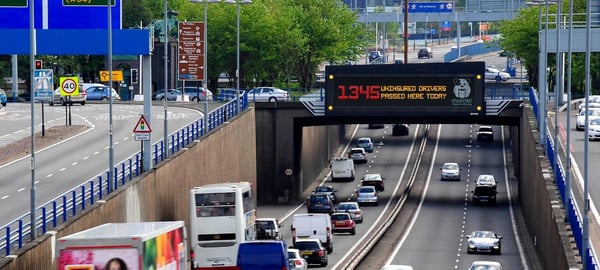
It’s estimated that over 1 million UK drivers don’t have car insurance; a problem that can cost honest motorists dearly.
Lots of insurers talk about this, so how do you communicate the message in a compelling way that really grabs everyday drivers’ attention?
One interruptive solution is to use Digital out of home to drive the message.
The DOOH screens, located at four uninsured driver hotspots across the UK in the city centres of Manchester, Leeds, London and Birmingham, will alert people to the number of uninsured drivers that have driven past the screen that day.
Using data from the Motor Insurance Database and innovative camera-recognition technology from Ocean Outdoor, the counter on the screens will go up in real-time, dynamically registering passing vehicles and display how many cars that have passed the precise location are likely to be uninsured.
By tapping into big data, it’s possible to create ads that use contextual information to help resonate with audiences. It can be as simple as creative that responds to weather and regional references—or it can be minutely specific, delivering precisely targeted messages.
These targeted messages have the greatest impact when they combine data sets with innovative technology. One of the best recent examples is Churchill’s "Uninsured drivers" campaign, which combines camera recognition technology with data from the Motor Insurance Database to dynamically register vehicles and calculate how many cars passing the display are likely to be uninsured.
With ever-more data becoming available, advertisers will be able to create even more specific targeted messaging—digital out-of-home is the perfect platform to deliver those messages.
5. Secret Life of Pets - Personalised
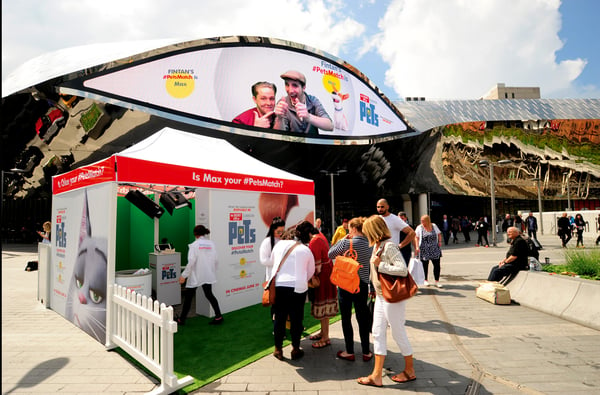
With 500 Million users accessing the Instagram App everyday, social-media sharing is a ubiquitous feature of modern life. Digital out-of-home provides people with a unique way to share special moments, combining the interactivity and personalisation of digital with the grand, public scale of out-of-home advertising.
See your name in lights, be part of the conversation. Something that brings out the extrovert in all of us. That's what Secret Life Of Pets around the premier of their first film. They invited fans of the film to discover their #PetsMatch. Using augmented reality, people could create their own animated selfies and short film trailers, which were then uploaded onto DOOH screens around the UK.
This campaign saw an amplified reach across social unified under the hashtag #PetsMatch.
If you let your customers express themselves they'll repay you by expanding the reach of your content and messaging.


